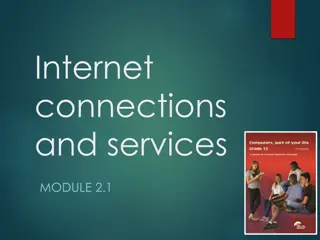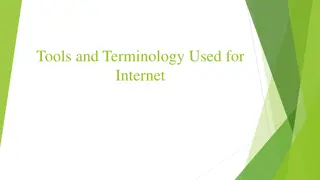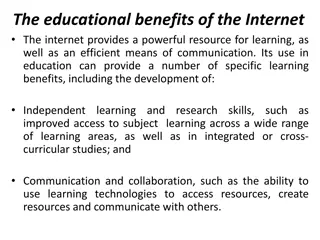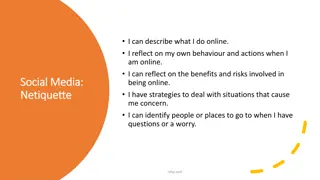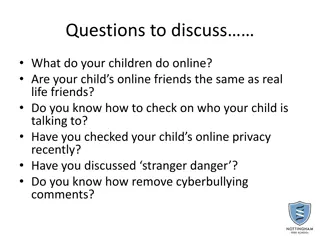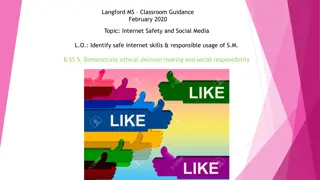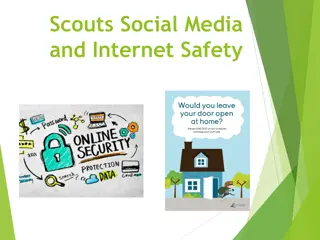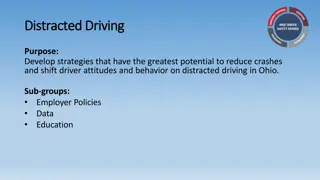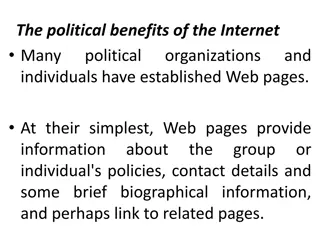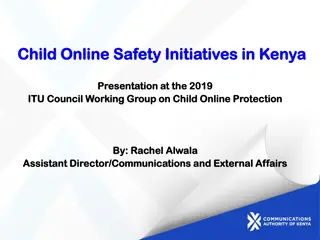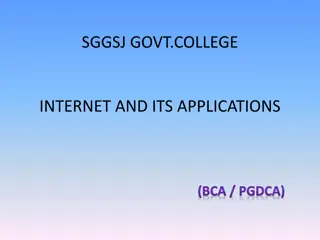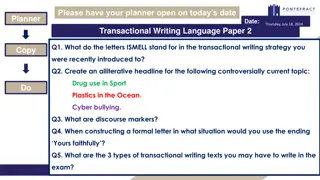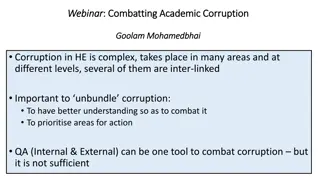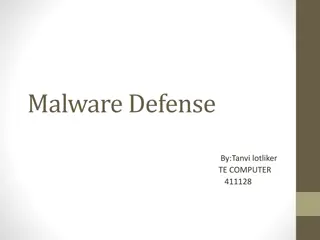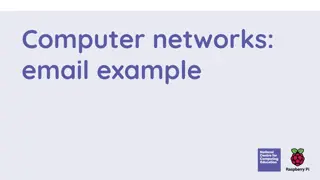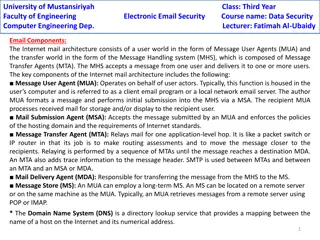Understanding and Combating Online Trolls: Strategies for a Safer Internet
Online trolls, a growing issue on social media platforms, aim to sow discord and provoke negative reactions. Learn about the origins of trolling, its impact, and strategies to combat this harmful behavior, offering support to those affected.
Download Presentation

Please find below an Image/Link to download the presentation.
The content on the website is provided AS IS for your information and personal use only. It may not be sold, licensed, or shared on other websites without obtaining consent from the author. Download presentation by click this link. If you encounter any issues during the download, it is possible that the publisher has removed the file from their server.
E N D
Presentation Transcript
Writing to Persuade - Trolls We all hear or see the word troll a lot recently, but what is a troll and why are they so controversial? What is an online troll? Why is it that online trolls have become more of a problem in recent years? What strategies can we use to stop trolls and help people who suffer because of them?
The term online troll is a relatively new one It became popular on the Internet in the late 1990s and the rise of social media has seen a huge increase in the amount of trolling . The original use of the word comes from Scandinavian folklore, where little, ugly creatures would live under bridges and often be anti-social, slow-witted and argumentative. In more recent times, the term has been used as a metaphor to describe the act of targeting someone on the Internet, with abusive or hateful messages. As social medias like Facebook, Instagram and Twitter have grown, more and more people have acted as trolls in an attempt to create anger, division and get a negative reaction from others.
Learning outcomes To describe persuasive techniques and how they can persuade an audience To explain how we can use persuasive techniques to engage an audience To evaluate how a writer uses specific techniques in an article and why
What are the differences between persuading and arguing? We ve spent the last week analysing articles and writing our own, but with a focus on writing to argue. Now, we will look at writing to persuade. Discuss: What are the differences between these two purposes? How are they shown in the style of writing?
WRITING TO ARGUE WRITING TO PERSUADE There are similarities between these two purposes, but generally writing to argue is about putting forward your own ideas AND showing an awareness of other perspectives, whilst writing to persuade focuses on your own perspective and convincing the audience you are right. What is it? Giving the case for one side of a debate Convincing someone that your opinion is right What does it involve? Being aware of the other side of a debate Using your language to convince your leader. What key features do you often find in this type of writing? Includes counter- arguments, rhetorical questions, facts, statistics, emotive language Includes triplets, repetition, emotive language, rhetorical questions, direct address and more Writing to argue often involves more facts and statistics to support ideas, whereas writing to persuade focuses on use of language to change a reader s mind.
Persuasive techniques Today we re going to focus on persuasive writing. Did you know there are many techniques you can use to help you to persuade someone to think or do something? An easy way to remember some of these is the acronym DAFORREST. Complete the DAFORREST acronym which lists many of the persuasive techniques you can use when writing to persuade. Direct address ( you ) A F O R R E S T Extension: What are the best techniques to use when writing to persuade? Why?
Persuasive techniques Direct address ( you ) Alliteration / Adjectives Facts Opinions Rhetorical questions Repetition Exaggeration / Emotive language Statistics Tone / Triplets Complete the DAFORREST acronym which lists many of the persuasive techniques you can use when writing to persuade. Extension: What are the best techniques to use when writing to persuade? Why?
Read the Trolls article with the person nearest to you Work together to annotate any DAFORREST techniques you can see being used. For each one, explain how the writer has used them and why. Evaluate how the writer is able to use DAFORREST techniques to engage the audience. Provide specific examples. Direct address ( you ) Alliteration / Adjectives Facts Opinions Rhetorical questions Repetition Exaggeration / Emotive language Statistics Tone / Triplets
They used to be ugly creatures that lived under bridges in fairy tales. In the 1990s, they were the florescent-haired toys that nobody could get enough of. In the 21stcentury, trolls are now lurking online, waiting to spoil your fun, and worse. The opening paragraph of the article hooks the reader in by explaining what trolls are and what the word troll means without using it. It intrigues us as readers before we go on to discover what the article is actually about. Since the rise of the internet, we ve used the word trolls to refer to people who deliberately try to annoy or upset people online. They often post insults, spam, deliberately argumentative comments or other material designed to get a negative reaction from the original poster. You ll find trolls pretty much anywhere there s a comments section. You might even have been a troll yourself at some point. You might be one still, priding yourself on your ability to upset people you ve never met with a carefully-chosen nonsensical argument, off-topic post or pathetic personal insult. Next, the writer uses a number of facts to explain what trolls are and what they do. They use hyperbole to suggest trolls are in every comments section, and a lot of direct address to speak directly to the reader and make them feel this article is relevant to them. But I hope you re not.
You see, trolls are just another type of bully. Theyre nothing new in themselves; as a species, we ve been subjected to meanness, spite and ignorance since we figured out we could talk. It s unfortunately part of the rich tapestry of human experience, along with other nicer things like kindness, empathy and understanding. But the problem with trolls is that, because they are often protected by the anonymity of a username, they feel that they can vent their bilious rants wherever they like and to whomever they like, without fear of actually having to be responsible for their words. In this section of the article, the writer conveys their opinions about trolls and how much they dislike them, but also how frustrating it is that trolls can often be protected by anonymity online. However, in the next paragraph they explain using facts that the CPS is going to be able to prosecute types of trolling in the future. Thankfully, the law is changing to try and remedy the situation. The Crown Prosecution Service are now making it easier to prosecute trolls who abuse and harass people online. Comments which threaten violence, which are obscene or grossly offensive, could cause their author to be prosecuted.
Oh, but what about free speech? I hear you ask. Isn t it my right to deliberately be an idiot somewhere I m not wanted? . Well no, it isn t, actually. But there is an important distinction to make between disagreeing with people and subjecting them to abuse. If your opinion differs from other people, fine. You might not be welcome to express it in certain contexts, but it s your opinion and you are entitled to it. If you are deliberately using your words (or pictures) to offend and upset somebody, then you re trolling, and that s not okay. Take the example of female MPs online, who are exposed to rape and death threats on a depressingly frequent basis, merely for doing their jobs. Nobody deserves to be subjected to that kind of trolling. In the last paragraphs of the article, the writer continues to provide their own opinions about trolls and tries to persuade the reader that there is no defence for trolling. They claim having a different opinion is fine, but if you trying to hurt others or abuse them then that s trolling. They provide the example of female MPs who are often subjected to atrocious abuse; this helps to support the writer s viewpoint. In the final paragraph, the writer continues to provide their opinions, but they also continue to address the reader. At the end of the article, they link back to the very start, using the original meaning of troll to criticise online trolls and suggest they should be put back under the bridge . Most trolls wouldn t dream of saying the things they type online out loud in real life, to real-life people. If they did, they d be kicked out of places faster than they could say loser . So be sure to steer clear of trolls, and don t be afraid to use the report button if you need to flag up some abusive comments. The internet has given us so many wonderful things; let s put those trolls back under the bridge where they belong.
The writer uses a lot of direct address in this article Moreover, much of the focus of the article is in providing their opinions to the reader. Discuss: Why do you think they did this? Bonus Challenge: How is this article different to the others we have studied this term so far?
Plenary: Three Ideas Write down three ideas you will take away from today s lesson to better prepare you for To describe persuasive techniques and how they can persuade an audience To explain how we can use persuasive techniques to engage an audience To evaluate how a writer uses specific techniques in an article and why





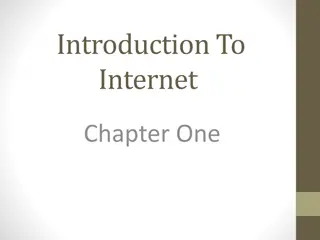

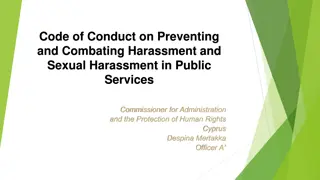
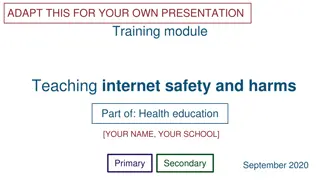


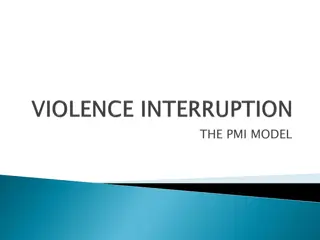



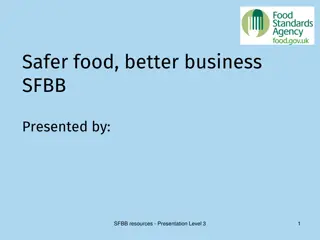
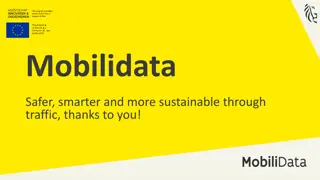



![Prevention and Combating of Hate Crimes and Hate Speech Bill [B.9B.2018]](/thumb/60513/prevention-and-combating-of-hate-crimes-and-hate-speech-bill-b-9b-2018.jpg)
